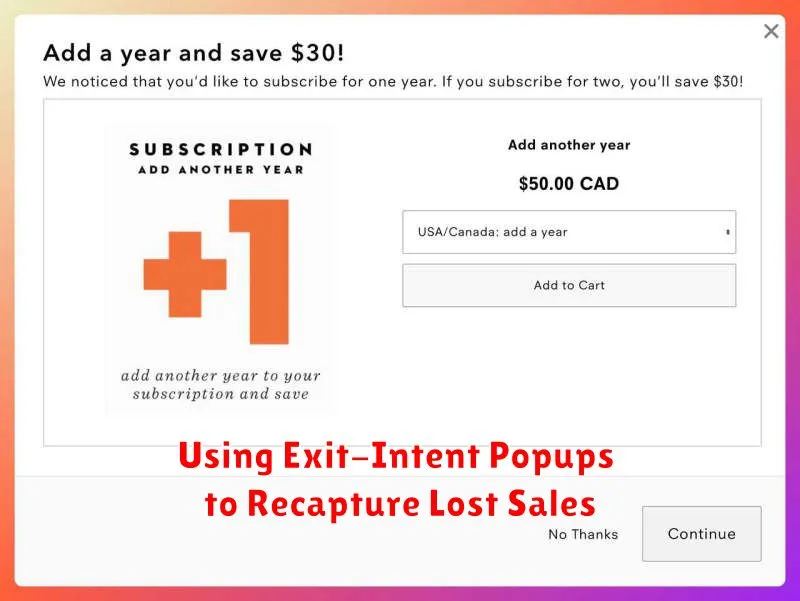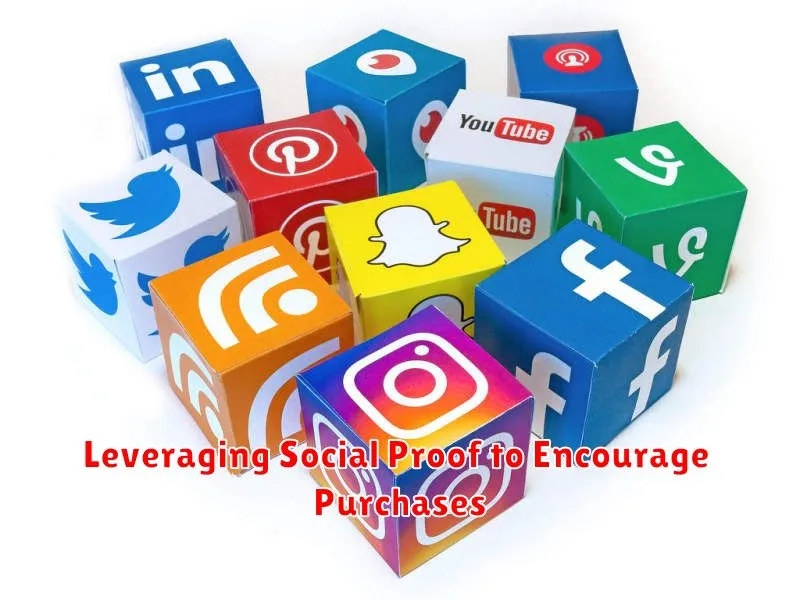Stop cart abandonment and reclaim lost revenue. Cart abandonment, the bane of e-commerce businesses, represents a significant loss of potential sales. Customers add items to their online shopping carts, but for various reasons, they abandon the purchase before completing the checkout process. This article explores proven strategies to effectively combat cart abandonment, boost your sales, and optimize your e-commerce conversion rates. Learn how to recover lost sales and improve your bottom line by implementing these practical techniques.
From addressing technical issues and streamlining the checkout process to implementing effective email reminders and offering enticing incentives, this guide provides actionable insights to help you reduce cart abandonment. Discover how to understand the reasons behind cart abandonment and tailor your approach to recover those lost sales. By implementing these proven strategies, you can significantly improve your sales and enhance your overall e-commerce performance. Recapture those almost-converted customers and maximize your revenue potential.
Understanding the Reasons Behind Shopping Cart Abandonment
Identifying why customers abandon their carts is the first step towards reducing cart abandonment rates. Unexpected costs are a major deterrent. High shipping fees, taxes, or other unforeseen charges revealed at checkout often lead to abandoned purchases.
A complicated checkout process can also discourage shoppers. Requiring account creation, lengthy forms, or confusing navigation can frustrate customers and drive them away.
Website performance issues play a role as well. Slow loading times or site errors can create a negative user experience, leading to lost sales. Furthermore, lack of trust in the website’s security or payment gateway can deter customers from completing their purchases. Concerns about data privacy and secure transactions contribute significantly to cart abandonment.
Finally, simply browsing and comparing prices is a common reason for cart abandonment. Many shoppers use online carts as a way to save items for later consideration or compare prices across different websites before making a final decision.
Optimizing Your Website’s Checkout Process for Conversions
A cumbersome checkout process is a major contributor to cart abandonment. Streamlining this experience is crucial for boosting conversions. Minimize the number of steps required to complete a purchase. Ideally, offer a guest checkout option to avoid forcing account creation.
Clearly display all costs upfront, including shipping, taxes, and any other fees. Hidden costs revealed at the last minute can deter customers. Provide progress indicators within the checkout process so customers know where they are in the journey. This transparency builds trust and reduces anxiety.
Optimize your website for mobile devices. A responsive design is essential as many customers shop on their smartphones. Ensure the checkout process is seamless and user-friendly on smaller screens. Simplify form fields and offer auto-fill options where possible to reduce typing effort.
Offering Multiple Payment Options and Secure Transactions
A key factor in reducing cart abandonment is providing a variety of payment methods to cater to diverse customer preferences. Offering only limited options can create a barrier for potential buyers. Integrating popular payment gateways like PayPal, Stripe, Apple Pay, and Google Pay, alongside traditional credit and debit card options, streamlines the purchasing process and accommodates a wider customer base.
Displaying security badges prominently throughout the checkout process is crucial for establishing trust and assuring customers that their financial information is safe. Clearly visible security logos from reputable providers like Norton or McAfee can significantly alleviate security concerns and encourage customers to complete their purchases. Implementing robust security measures such as SSL encryption and PCI DSS compliance is essential for protecting sensitive data and building customer confidence. Secure transactions are not just a feature, but a necessity for a successful online business.
Using Exit-Intent Popups to Recapture Lost Sales

Exit-intent popups are a powerful tool to re-engage visitors who are about to abandon their shopping carts. These popups are triggered when a user’s mouse cursor moves towards the exit button or tab close area, indicating an intention to leave the website. This presents a final opportunity to persuade them to complete their purchase.
Effectiveness relies heavily on the content and offer presented within the popup. Rather than a generic message, consider offering a compelling incentive such as a small discount, free shipping, or a limited-time offer. This added value can be the deciding factor for a hesitant shopper.
Customization is key. Tailor the popup message and offer to the specific products in the user’s cart for a more personalized experience. For example, if a user has a dress in their cart, offer a discount on accessories or complementary items.
Timing is also crucial. Ensure the popup appears at the precise moment the user is about to exit, giving them ample time to consider the offer without being intrusive. Avoid displaying the popup too early in the browsing session, as this can be disruptive.
Sending Abandoned Cart Reminder Emails
Abandoned cart reminder emails are a highly effective way to recover lost sales. These emails serve as a gentle nudge, reminding customers of the items they left behind and encouraging them to complete their purchase.
Timing is key when sending these reminders. A first email should be sent within one hour of abandonment. This captures the customer while the purchase is still fresh in their mind. Follow up with a second email 24 hours later, and a final email 72 hours after abandonment if the customer still hasn’t converted.
Personalize your emails by including the customer’s name and the specific items left in their cart. Clearly display product images and descriptions. A prominent call to action button, like “Return to Cart,” makes it easy for customers to complete their purchase.
Consider offering incentives in your reminder emails, such as free shipping, a small discount, or a limited-time offer. This can be the extra push needed to encourage customers to finalize their purchase. Always ensure your emails are mobile-friendly for optimal viewing on any device.
Providing Clear and Concise Product Information
One of the most common reasons for cart abandonment is a lack of clear and concise product information. Customers need to be confident in what they are buying, and incomplete or confusing information can lead to hesitation and ultimately, abandonment. Comprehensive product descriptions are crucial, including details on size, materials, features, and functionality.
High-quality product images from multiple angles allow customers to visualize the item fully. Zoom functionality and 360-degree views are particularly helpful. Accurate sizing charts and fit guides minimize uncertainty and reduce the likelihood of returns due to incorrect sizing. Finally, readily accessible information about shipping costs, delivery times, and return policies empowers customers to make informed decisions, reducing the chances of abandoning their cart.
Building Trust and Credibility with Customer Reviews and Testimonials
Customer reviews and testimonials are powerful tools for building trust and credibility, directly impacting cart abandonment rates. Transparency is key. Showcase both positive and negative reviews to demonstrate authenticity. This fosters confidence in potential buyers, assuring them that they are making informed decisions.
Strategically place reviews and testimonials throughout the purchasing process. Feature them prominently on product pages, near the “add to cart” button, and even within the checkout process itself. Highlight key benefits and address common concerns customers might have.
Encourage customers to leave reviews after their purchase. A simple follow-up email can significantly increase the number of reviews received. Consider implementing a review platform that simplifies the process and allows for easy management of customer feedback.
Leveraging Social Proof to Encourage Purchases

Social proof is a powerful psychological phenomenon where people conform to the actions of others under the assumption that those actions are reflective of the correct behavior. This principle can be effectively applied to reduce cart abandonment and boost sales.
Displaying real-time purchase notifications can subtly nudge potential customers towards completing their purchase. Seeing that others are actively buying the same product reinforces the idea that it’s a desirable item.
Highlighting popularity metrics such as “bestseller” tags or showcasing the number of times an item has been purchased can also generate social proof. This reassures customers that the product is well-received and a safe bet.
Integrating social media feeds showcasing positive customer experiences with the product or brand provides further validation. Authentic user-generated content can be especially impactful in building trust and encouraging conversions.
Offering Incentives and Discounts to Complete the Purchase
Strategic incentives can significantly influence a customer’s decision to complete their purchase. Offering a discount at the checkout stage can be highly effective. This could be a percentage discount, a fixed amount off, or free shipping.
Limited-time offers create a sense of urgency, prompting customers to act quickly. For example, offering a discount for the next hour can encourage immediate purchase completion. Explicitly stating the expiration of the offer reinforces this urgency.
Another effective strategy is offering exclusive discounts for first-time buyers. This not only encourages cart completion but also helps attract new customers. This could be presented as a welcome offer upon signup or at the checkout stage for new accounts.
Consider offering free gifts with purchases over a certain threshold. This adds perceived value and incentivizes customers to spend a bit more to qualify for the free item. This strategy can also help increase average order value.

